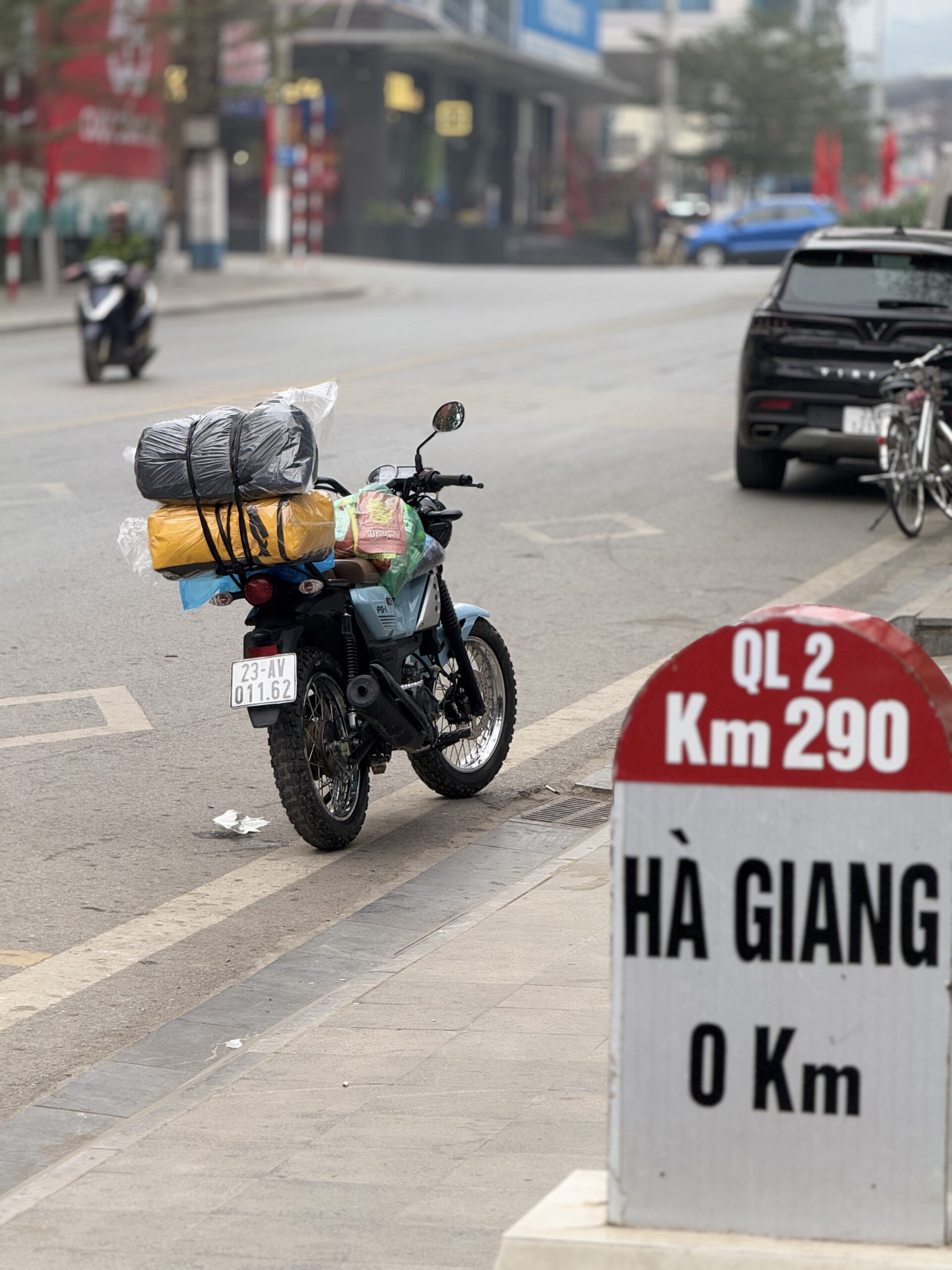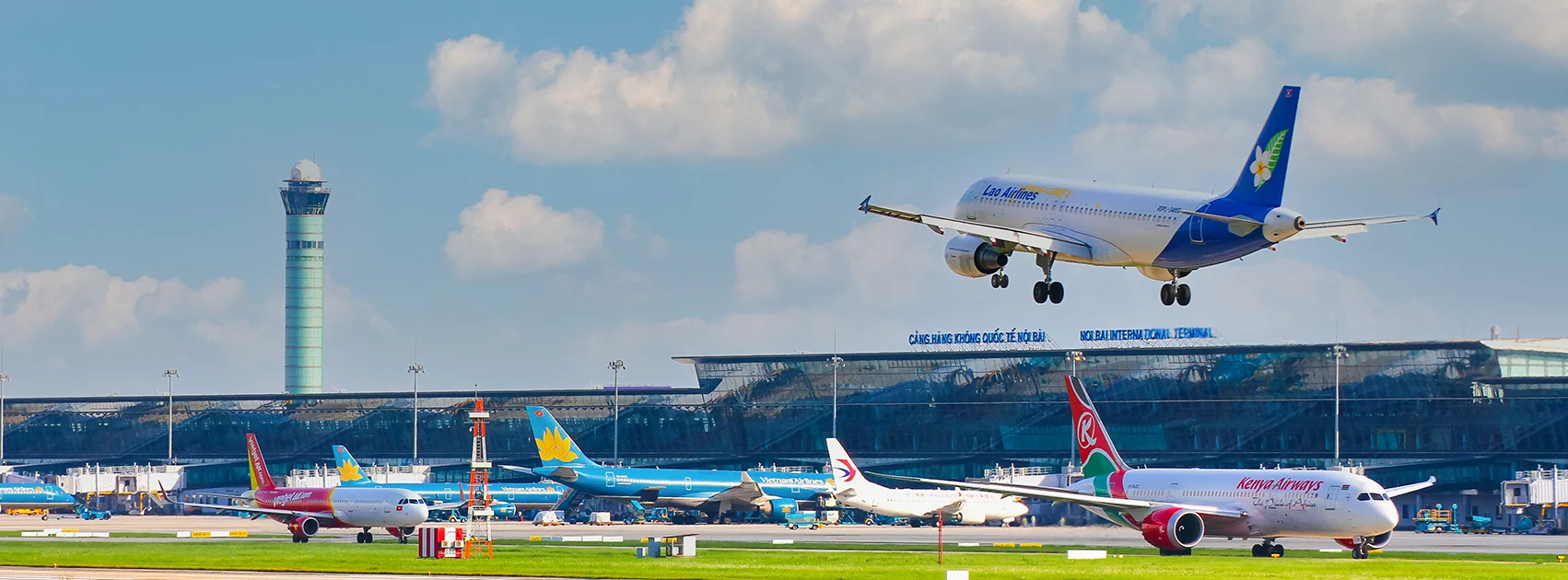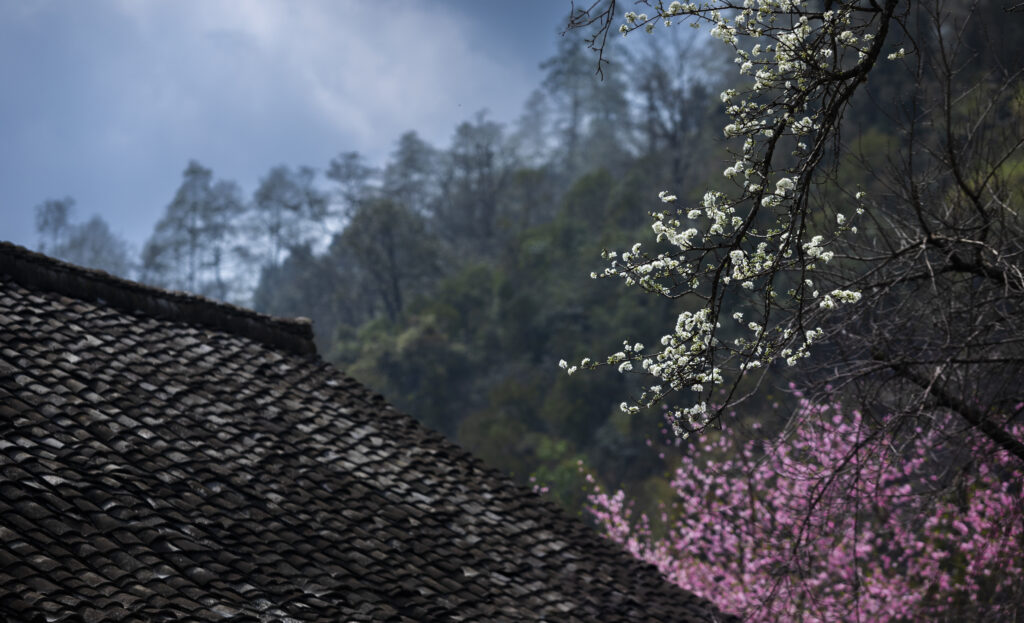Ha Giang consistently ranks among Vietnam’s most captivating destinations, renowned for its majestic limestone mountains, spectacular mountain passes, and the rich cultural heritage of its highland ethnic communities. Its pristine landscapes and vibrant seasonal festivals make it an ideal destination for both domestic and international travelers alike.
Due to its unique geographical location, many visitors wonder about the non-existent Ha Giang airport, and whether flying directly to this province is possible. This Phieu Travel guide will answer these questions in detail while providing comprehensive information about transportation options along with essential tips to ensure your journey to Ha Giang is smooth, safe, and memorable.
1. Is There an Airport in Ha Giang?
Currently, there is no official Ha Giang airport for civilian use, so direct flights to this highland province are not possible. The main transportation options available today include coach buses, private cars, or motorbikes, depending on your starting point and travel preferences.
For travelers coming from distant locations, you can fly to a nearby province first, then continue to Ha Giang by road. This approach is suitable for visitors from Central and Southern Vietnam or international tourists.
The Ultimate Ha Giang Loop Guide (2025): Itinerary, Map & Tips
2. How to Get to Ha Giang
Below, Phieu Travel provides detailed guidance on reaching Ha Giang using different transportation methods.
| Transportation Method | Travel Time (from Hanoi) | Approx. Cost | Pros | Cons |
| Motorbike | 8 – 10 hours | 150,000 – 200,000 VND/day (rental) | Flexible, scenic stops, adventurous | Requires riding experience, tiring, higher risk |
| Sleeper Bus | 6 – 7 hours | 250,000 – 350,000 VND/person | Cost-effective, saves time by traveling overnight | Less private, fixed schedule |
| Limousine | 6 – 7 hours | 300,000 – 400,000 VND/person | Comfortable, convenient, more private | Higher cost than standard bus |
| Airplane + Bus | 1hr flight + 7hr bus | > 1,000,000 VND | Fastest for long-distance travelers | Complex, expensive, requires transfers |
2.1 By Motorbike
Traveling to Ha Giang by motorbike is an ideal choice if you have experience with long-distance riding and want flexibility during your journey. This option allows you to stop whenever you wish, visit scenic spots along the way for photos, or simply take breaks at your convenience.
However, the distance is considerable, with many steep mountain passes that aren’t suitable for inexperienced riders. Before departure, thoroughly check components like lights, brakes, chains, and tires. Semi-automatic or manual motorcycles are recommended for better stability on steep inclines. Additionally, traveling in groups enhances safety and provides support in case of emergencies.

2.2 By Car or Bus
Hanoi is the most common departure point for Ha Giang, with a relatively short distance of about 300 km. You can choose between sleeper buses or limousine services. The average travel time is approximately 7 hours.
Coach buses typically depart from terminals like Giap Bat, My Dinh, or Gia Lam in the evening, arriving in Ha Giang the following morning. For more privacy and comfort, limousine services cost between 250,000 – 350,000 VND per person. Groups of 8 or more might find it more economical to charter an entire vehicle at 2,800,000 – 3,500,000 VND, which also provides greater flexibility with pickup and drop-off times.
2.3 By Airplane
To reduce travel time, you can fly to Noi Bai Airport (Hanoi) or Cat Bi Airport (Hai Phong) – the two airports closest to Ha Giang – then continue by coach, private car, or limousine. From Hanoi, the journey to Ha Giang takes about 6-7 hours, while from Hai Phong it might take 8-9 hours due to the longer distance.
If landing at Noi Bai, consider booking an evening flight. Most Ha Giang-bound buses travel along National Highway 2, passing the Noi Bai – Phuc Yen intersection, which is quite close to the airport. You can board a bus directly from this intersection to Ha Giang without needing to go into central Hanoi.

3. Traveling to Ha Giang from Northern Vietnam Provinces
For a more straightforward journey, consider traveling directly to Ha Giang from other popular northern hubs like Ninh Binh, Sapa, Ha Long, or Cat Ba. This approach often saves money and reduces travel complexities compared to multi-leg trips involving flights. Numerous bus companies operate on these routes, offering a wide range of vehicle types with different levels of comfort to suit your needs.
Phieu Travel offers round-trip tickets with various vehicle options:
- Standard sleeper buses: Basic, air-conditioned buses with blankets, suitable for long journeys.
- Mobile hotel buses: Featuring private cabins, comfortable beds, entertainment screens, and amenities similar to a mini hotel room.
- Mobile palace buses: Designed like a miniature hotel with large window views, curtains, and dividers for privacy and comfort.
- Limousines: Premium leather seats equipped with mini-refrigerators, TVs, USB ports, perfect for those seeking luxury travel.
Ticket prices range from 250,000 to 700,000 VND, depending on the departure point and vehicle type. Door-to-door pickup and drop-off services are available at hotels, homestays, airports, or central stations, making your journey convenient while saving time and money.
Ha Giang Motorbike Loop: The Ultimate Tour with Phieu Travel
4. The Best Time to Visit Ha Giang
Ha Giang is most beautiful during autumn when terraced rice fields turn golden and buckwheat flowers blanket the rocky plateau in purple hues. Spring is equally rewarding with abundant blossoms and lively festivals throughout the highland villages. Nevertheless, summer and winter offer their own distinct charms, from cascading waterfalls to misty mountain passes.
Beyond seasonal changes, Ha Giang transforms month by month, captivating visitors in different ways whether through its clouds and skies, colorful flowers, or local festivals that showcase indigenous culture. To discover the unique characteristics of the rocky plateau during different times of the year, check out our article on “When is the Best Time to Visit Ha Giang!”

The Best Time to Visit Ha Giang: A Seasonal Guide to Flowers & Festivals
5. Important Tips for Traveling to Ha Giang
To ensure your journey exploring Ha Giang’s pristine beauty is as smooth and fulfilling as possible, here are some essential tips to keep in mind:
- If driving your own vehicle, bring approximately 1.5 liters of spare fuel and basic repair tools. If renting vehicles in Ha Giang or joining Phieu Travel’s tours, these preparations are unnecessary.
- Book accommodations in advance during peak tourist seasons to avoid full occupancy. When traveling with Phieu Travel, accommodations are pre-arranged, so you won’t need to worry about this aspect.
- Always pack warm clothing, even during summer, as mountain temperatures fluctuate significantly between day and night.
- Prioritize wearing sports shoes for convenient exploration of attractions like the Lung Cu Flag Tower, the White Rock Plateau, and other sites.
- Bring all necessary identification documents, especially if driving your own vehicle.
- Prepare sufficient cash, as many highland locations don’t support bank card payments.
Phieutravel.com has just clarified the status of the Ha Giang airport and shared the most common transportation options available today. With our experience organizing long-distance tours, we recommend choosing round-trip bus services for both cost savings and scheduling convenience. For personalized advice on selecting the vehicle type best suited to your specific needs, feel free to contact the Phieu team directly for prompt assistance!
Read more:
- A Guide to the Ha Giang Golden Rice Season (Sept & Oct)
- The White Cliffs of Ha Giang: A Path for Adventurous Hearts
- Five-Colored Sticky Rice: An Exquisite Art of Highland Cuisine


You Might Also Like
Ha Giang Weather in September: Complete Guide for Travelers
Exploring the magnificent Ha Giang Loop in September offers travelers a perfect balance of favorable[...]
Quan Ba Twin Mountains: Ha Giang’s Iconic Fairy Hills and Complete Travel Guide
The mystical Quan Ba Twin Mountains rise from the emerald valleys of Ha Giang like[...]
Vuong family mansion: the architectural marvel and cultural legacy of Ha Giang
Deep in Vietnam’s northern highlands, where mist-shrouded mountains meet terraced rice fields, stands a testament[...]
Ha Giang Loop Safety Tips: How to Ride Securely in Vietnam’s Northern Mountains
The Ha Giang Loop, with its winding mountain roads and breathtaking landscapes, offers one of[...]
The Ultimate Guide to the M-Shaped Curve on Ha Giang Loop
Vietnam’s remote northern province of Ha Giang hides a natural wonder that has captivated adventurous[...]
Most Beautiful Places to Visit in Vietnam: Essential Destinations and Insider Tips
Vietnam captivates travelers with its stunning landscapes, rich cultural heritage, and warm hospitality. From mist-shrouded[...]
Beyond the Beaten Path: Discovering Ha Giang Province in Northeast Vietnam
Ha Giang Province in Northeast Vietnam stands as one of the country’s last frontiers for[...]
Rainy season in Ha Giang: what to expect, when to go, and travel tips
Vietnam’s northern frontier reveals a different face during the rainy season, transforming Ha Giang’s limestone[...]